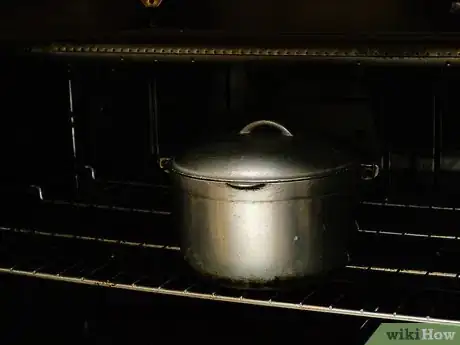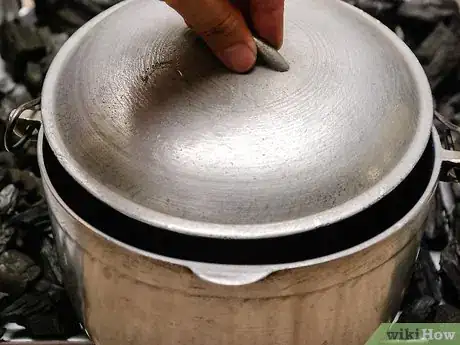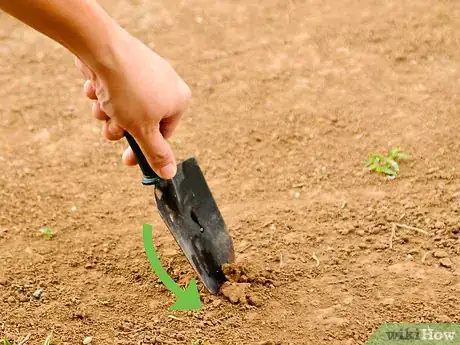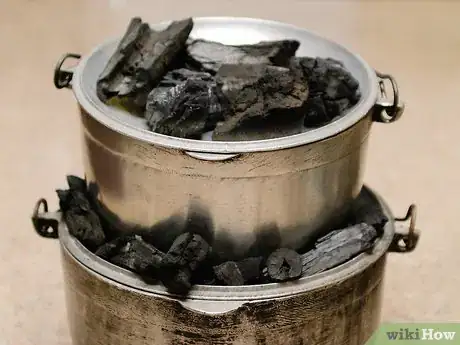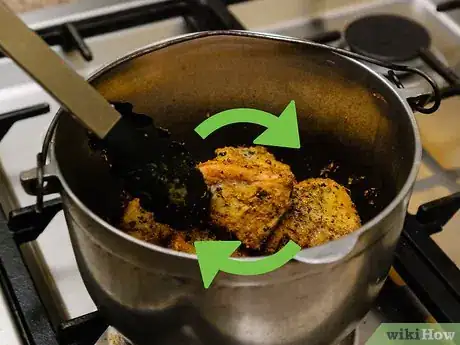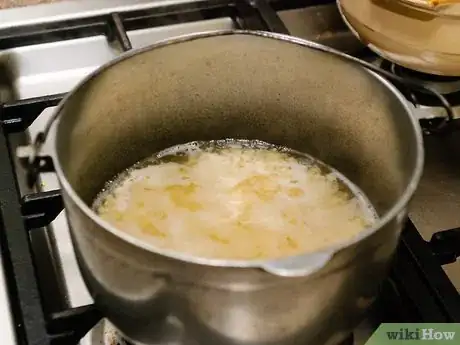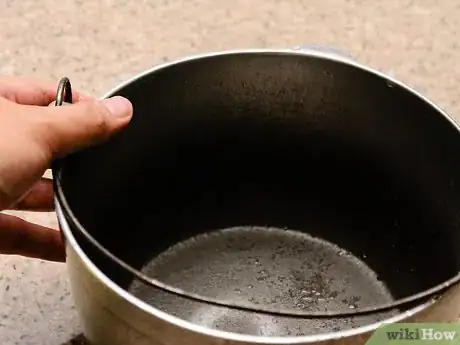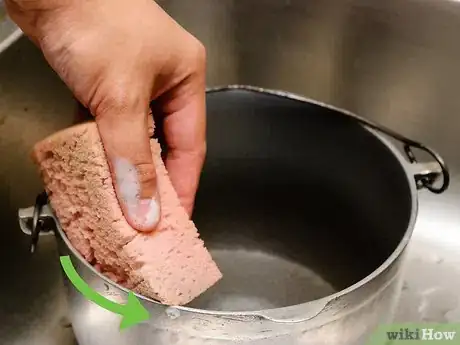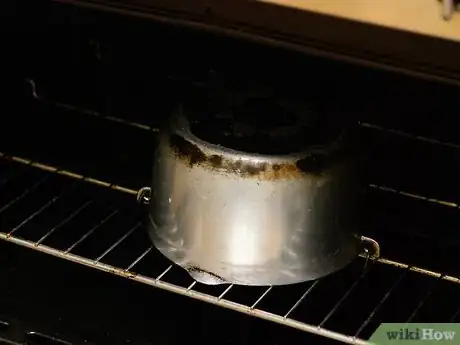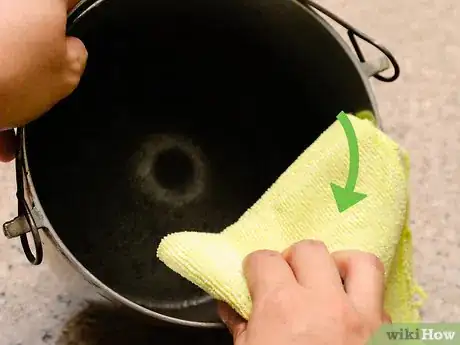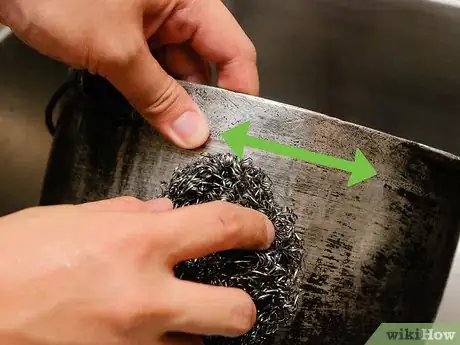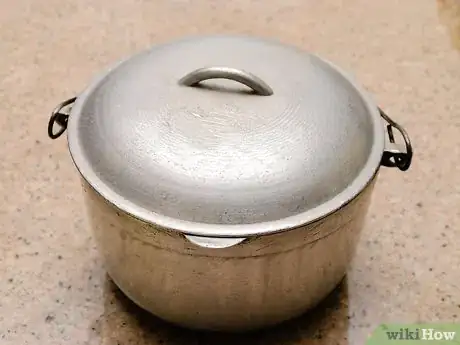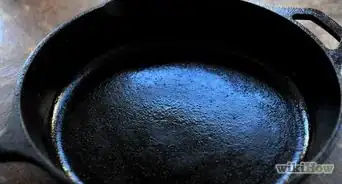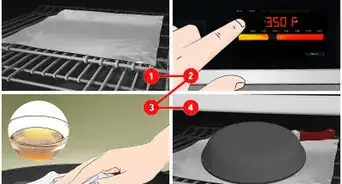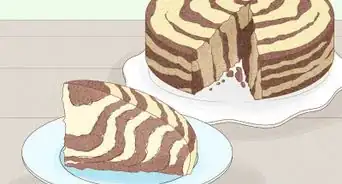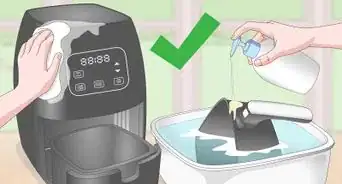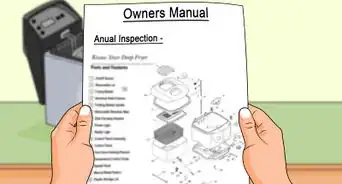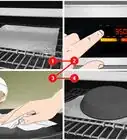This article was co-authored by wikiHow staff writer, Jessica Gibson. Jessica Gibson is a Writer and Editor who's been with wikiHow since 2014. After completing a year of art studies at the Emily Carr University in Vancouver, she graduated from Columbia College with a BA in History. Jessica also completed an MA in History from The University of Oregon in 2013.
There are 7 references cited in this article, which can be found at the bottom of the page.
wikiHow marks an article as reader-approved once it receives enough positive feedback. In this case, 87% of readers who voted found the article helpful, earning it our reader-approved status.
This article has been viewed 271,142 times.
Learn more...
You've probably seen several recipes that call for using a Dutch oven. A Dutch oven is a heavy-duty pot with a lid, traditionally made from cast iron (or sometimes made of steel). The lid usually has a lip so that you can stack coals and cook on top of the lid. And, the Dutch oven might have three small legs so that you can stand it on a fire when cooking outdoors. You can also use a Dutch oven much like any other piece of kitchen equipment, cooking inside on your stovetop or in your oven.
Steps
Cooking With Your Dutch Oven
-
1Bake with your Dutch oven. You can cook bread, pizzas, cakes, and other desserts in your Dutch oven by placing hot coals on top of the lid and underneath the Dutch oven full of food. To bake, you should place more coals on top of the lid than underneath the Dutch oven. This will prevent food on the bottom from burning.[1]
- Consider your Dutch oven's diameter. To figure how many charcoal briquette coals to put on top, add 3 to the diameter. To determine the bottom number, subtract 3. For example, if you have a 12-inch Dutch oven, you'd need 15 coals on top and 9 on the bottom.[2]
-
2Boil water or food in your Dutch oven. Since you're trying to heat water or a liquid-like stew, you should place all of the hot coals underneath your Dutch oven. This will quickly concentrate the heat near the bottom of the pot. You should also place all the coals underneath the Dutch oven if you'd like to use it for frying food.[3]
- While you can use the lid when bringing your food or water to a boil, you shouldn't put coals on top of the lid. Having hot coals on the lid of a Dutch oven full of boiling liquid could be dangerous and difficult to remove.
Advertisement -
3Use the lid as a griddle or skillet. If you want to quickly fry up breakfast, turn the lid upside down and place it directly on hot coals. Watch the food to make sure it cooks completely and doesn't burn. You might want to use this method for frying bacon, eggs, pancakes, or sausages.[4]
- Most Dutch oven lids are slightly shallow with a dip in the middle so they can hold runny ingredients.
-
4Try bean hole cooking. Dig a hole about 3 feet deep and line it with rocks. You should be able to build a fire in it. The heat from the wood fire should heat the stones so that you can lower your Dutch oven into the hole and cook the food. Cover the lid of the Dutch oven with coals and shovel dirt over the hole. This will trap the heat. You'll need to leave the Dutch oven to cook, usually overnight.
- Keep in mind that it will take several hours to get the rocks in the hole hot enough before you can lower the bean pot down.
- It's a good idea to par boil your dry beans for an hour and then soak them in water overnight before you even begin using the bean hole to cook them.
-
5Consider stacking your Dutch ovens. If you need to cook a large meal for a crowd or just want some variety in the meal you're cooking outside, stack several ovens. You'll need at least three Dutch ovens. Fill your Dutch ovens with food and place hot coals underneath the largest one. Place hot coals on its lid and then stack another Dutch oven directly on top. Place coals over this oven's lid and stack another Dutch oven. Finish by placing coals on the topmost Dutch oven's lid and let the food cook.[5]
- You can use Dutch ovens of the same size or you can tier them. For example, use a 14-inch Dutch oven on the bottom, a 12 inch in the middle, and a 10 inch on top.
-
6Use your Dutch oven for roasting. Since Dutch ovens maintain heat well, they're good for roasting large cuts of meat. Heat your conventional oven to 350 F (176 C). Heat your Dutch oven on the stovetop and brown your meat to get a richer flavor. Add liquid and any vegetables you like to your Dutch oven. Cover it and place it in your preheated conventional oven. Bake your roast for an hour or two (longer if there's a bone in it).[6]
- Only use a lid if it's made to withstand oven temperatures. Most Dutch oven lids should work, but avoid putting a lid in the oven if yours has any plastic parts. Just cover it with a sheet of aluminum foil instead.
- You can also use Dutch ovens in your oven when baking things like cornbread, cakes, or casseroles.
-
7Simmer food on the stove. If you want to make something that takes a long time to simmer, consider using your Dutch oven. Just set your Dutch oven on your burners and cook your food directly in it. Turn the heat to a little lower than you're used to when using other pots and let your food simmer for several hours. For example, you might make a stew with dumplings or chili.
- When using a cast iron Dutch oven, you don't need to cook with such high temperatures because the cast iron maintains heat so well. Try cooking on medium heat.
Seasoning and Cleaning Your Dutch Oven
-
1Determine if your Dutch oven is enameled or bare. To tell what you kind of Dutch oven you have, look inside your Dutch oven. If it's bare cast iron, it will appear black or gray and be slightly bumpy. If your Dutch oven is enameled, it will look white inside and be smooth. It may have black matte enamel which will also be smoother than an unprotected cast iron Dutch oven.[7]
- Bare cast iron Dutch ovens aren't coated with any protective enamel, so they need to be seasoned before using.
- If your Dutch oven has a protective coating, a porcelain has been bonded to the cast iron surface.
-
2Clean your enameled Dutch oven. You won't need to season your enameled Dutch oven, but you will need to wash it after each use. To clean, wash the Dutch oven with soapy water so that food is completely removed. Avoid using metal pads like steel wool to clean since these can damage the enamel finish. Never wash your enameled Dutch oven in the dishwasher.
- If the white enamel becomes stained, make a paste of baking soda and water. Rub this into the stains and rinse it off.
-
3Season a bare cast iron Dutch oven. If your Dutch oven doesn't have a protective enamel, you'll need to season it like you would any other piece of cast iron cookware before you use it for the first time. Wash and completely dry the Dutch oven while you preheat an oven to 325 F (162 C). Dip a cloth or paper towel in vegetable oil or melted shortening and apply a thin layer to the entire Dutch oven. Turn the Dutch oven upside down and bake it in your oven for 1 hour. Turn off the heat and let it cool completely before handling it.[8]
- You may want to lay a piece of aluminum foil in the bottom of your oven so that when you're baking the oiled Dutch oven, the foil will catch any drips that fall.
-
4Clean your bare cast iron Dutch oven. Once you've been cooking with your Dutch oven, you'll need to clean it after each use. Avoid using soap to wash the Dutch oven. Instead, use hot water and a scrub brush to clean away the food remnants. Completely dry the Dutch oven with a clean towel and pour about a teaspoon of oil into it. Use a cloth or paper towel to wipe the oil over the entire Dutch oven.
- You can use any oil you like. Or, if you want, you can melt vegetable shortening to use.
-
5Scour a dirty bare cast iron Dutch oven. If you've neglected to properly clean and season your cast iron Dutch oven, you'll need to scrub it with soapy water using steel wool or a scrub pad to remove food debris and rust. Rinse the Dutch oven and place it in an oven that's heated to 300 F (148 C) for 10 minutes so that it completely dries. Drizzle oil and a handful of kosher salt in the bottom of the cooled Dutch oven. Rub the mixture with a cloth to completely remove the rust. Rinse the Dutch oven and dry it in the oven again. Season it like you did before you first used the Dutch oven.[9]
- You may need to repeat the scouring, rinsing, and drying steps. Keep repeating the process until your Dutch oven is completely clean.
- If your Dutch oven turns brown or rusty over time, you probably need to reseason it. Scrub it clean and season it again.
-
6Finished.
Community Q&A
-
QuestionI have been following the charcoal rule for briquettes on top and bottom. However, this method smells up my stove's oven, smokes up the kitchen and sets off the smoke alarms.
 MicheleTop AnswererCharcoal is meant to be used only outdoors, as it's a fire hazard. Dutch ovens come in two types. Those for use indoors have flat bottoms and rounded lids that can be used on the stove or in a gas or electric oven. Those for outdoor use have 4 legs to help lift the oven above the coals placed beneath, and an inverted top to hold hot coals to heat the oven more evenly from both the top and bottom.
MicheleTop AnswererCharcoal is meant to be used only outdoors, as it's a fire hazard. Dutch ovens come in two types. Those for use indoors have flat bottoms and rounded lids that can be used on the stove or in a gas or electric oven. Those for outdoor use have 4 legs to help lift the oven above the coals placed beneath, and an inverted top to hold hot coals to heat the oven more evenly from both the top and bottom. -
QuestionCan I put a cast iron Dutch oven in the oven after the recipe has been bought to the boil on the stove?
 MicheleTop AnswererYou definitely can. Just make sure to preheat the oven so you don't lose too much heat in the pot, and be extra careful handling such a hot and heavy item. A little help doing the transfer might save you from burns and frustration should you drop it.
MicheleTop AnswererYou definitely can. Just make sure to preheat the oven so you don't lose too much heat in the pot, and be extra careful handling such a hot and heavy item. A little help doing the transfer might save you from burns and frustration should you drop it. -
QuestionI find that roasting a chicken with the lid on generates a lot of liquid. Is this normal?
 Community AnswerYes, because the heating causes steam and the moisture can't escape. If you don't like the wetness, you can cook with the top off. Or to keep the chicken moist and delicious, keep the top on for 3/4 of the time, and take the top off and raise the temperature in the oven to brown the chicken for a delicious crust.
Community AnswerYes, because the heating causes steam and the moisture can't escape. If you don't like the wetness, you can cook with the top off. Or to keep the chicken moist and delicious, keep the top on for 3/4 of the time, and take the top off and raise the temperature in the oven to brown the chicken for a delicious crust.
Warnings
- Dutch ovens retain heat very well. Remember that hot metal looks the same as cold metal. Always use oven mitts when handling your Dutch oven.⧼thumbs_response⧽
References
- ↑ http://whatscookingamerica.net/Information/DutchOven/DutchOvenCooking.htm
- ↑ http://www.chuckwagonsupply.com/faqs.html
- ↑ http://whatscookingamerica.net/Information/DutchOven/DutchOvenCooking.htm
- ↑ http://whatscookingamerica.net/Information/DutchOven/DutchOvenCooking.htm
- ↑ https://www.youtube.com/watch?v=dfYQACZ8l8g
- ↑ http://www.food.com/recipe/pork-roast-the-old-fashion-way-cast-iron-dutch-oven-44278
- ↑ http://www.notmartha.org/archives/2007/03/23/everything-i-know-about-dutch-ovens/
- ↑ http://www.thekitchn.com/how-to-season-a-cast-iron-skillet-cleaning-lessons-from-the-kitchn-107614
- ↑ http://www.fieldandstream.com/articles/gear/2013/03/how-restore-and-season-cast-iron-dutch-oven
About This Article
How you use your Dutch oven depends on what you plan to make. For baking, place charcoal briquette coals on the top of the lid and underneath the Dutch oven. If you want to boil water or food, place all the hot coals underneath the oven. You can also put the lid directly onto the coals to make it like a griddle or skillet. Just make sure to season your Dutch oven like any other cast iron cookware. If it is new, apply a thin layer or vegetable oil or melted shortening to the entire Dutch oven, turn it upside down, and bake it in the oven for 1 hour at 350°F. For advice on how to use your Dutch oven for roasting or simmering, keep reading!
